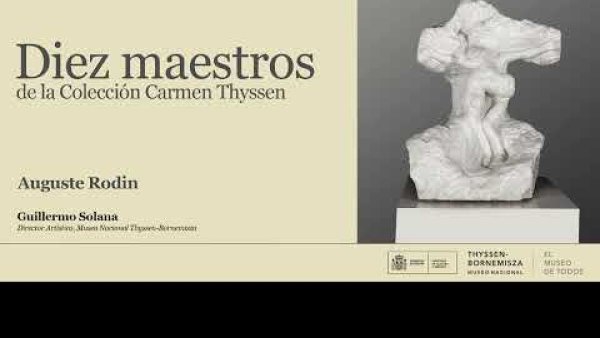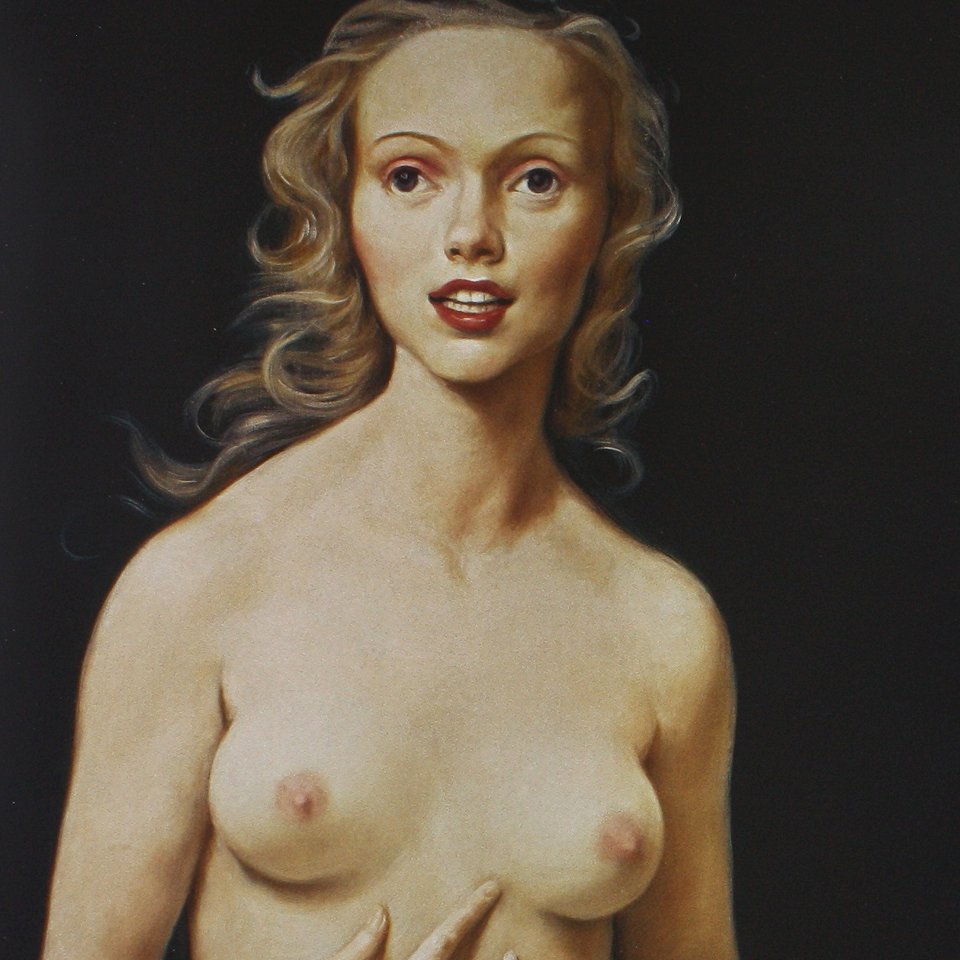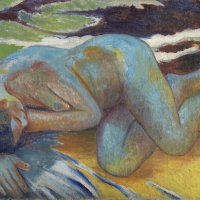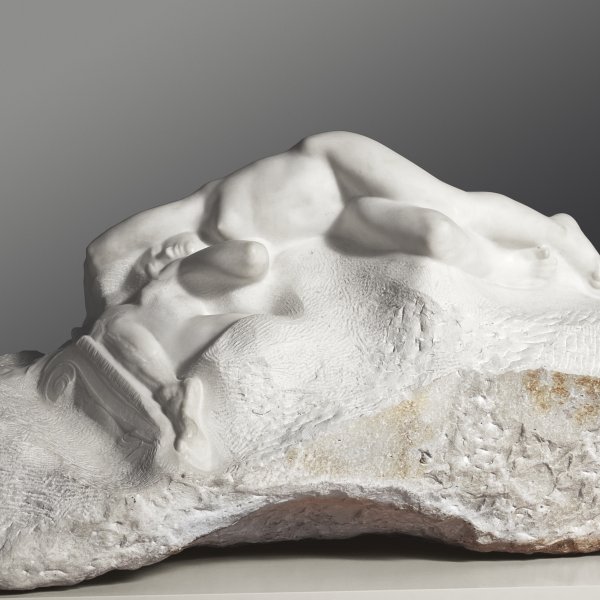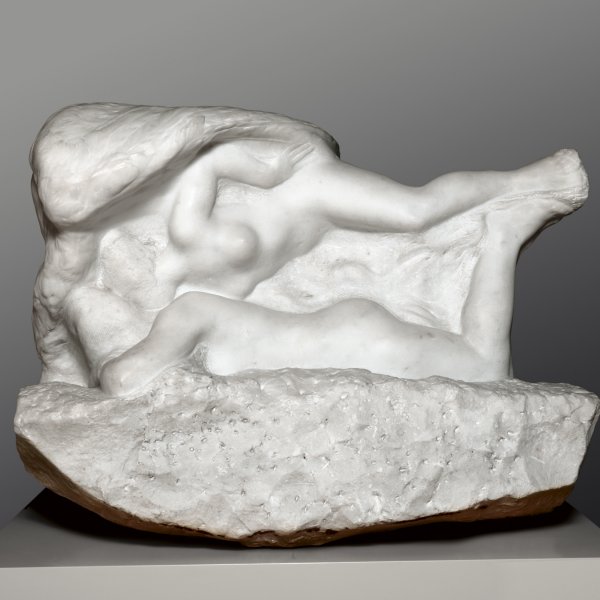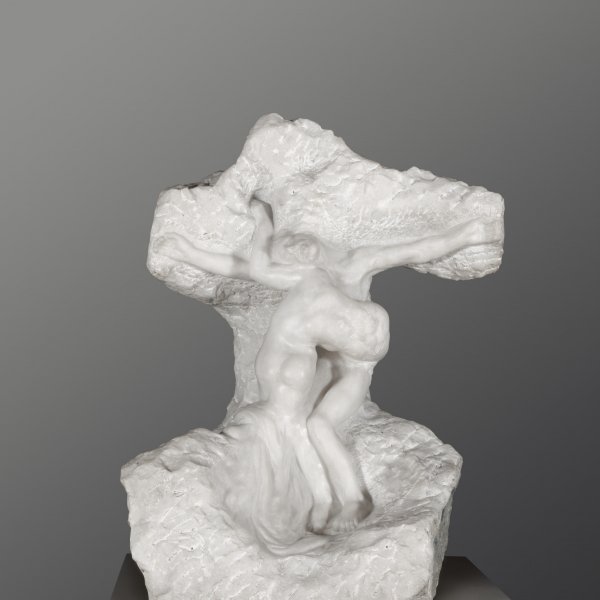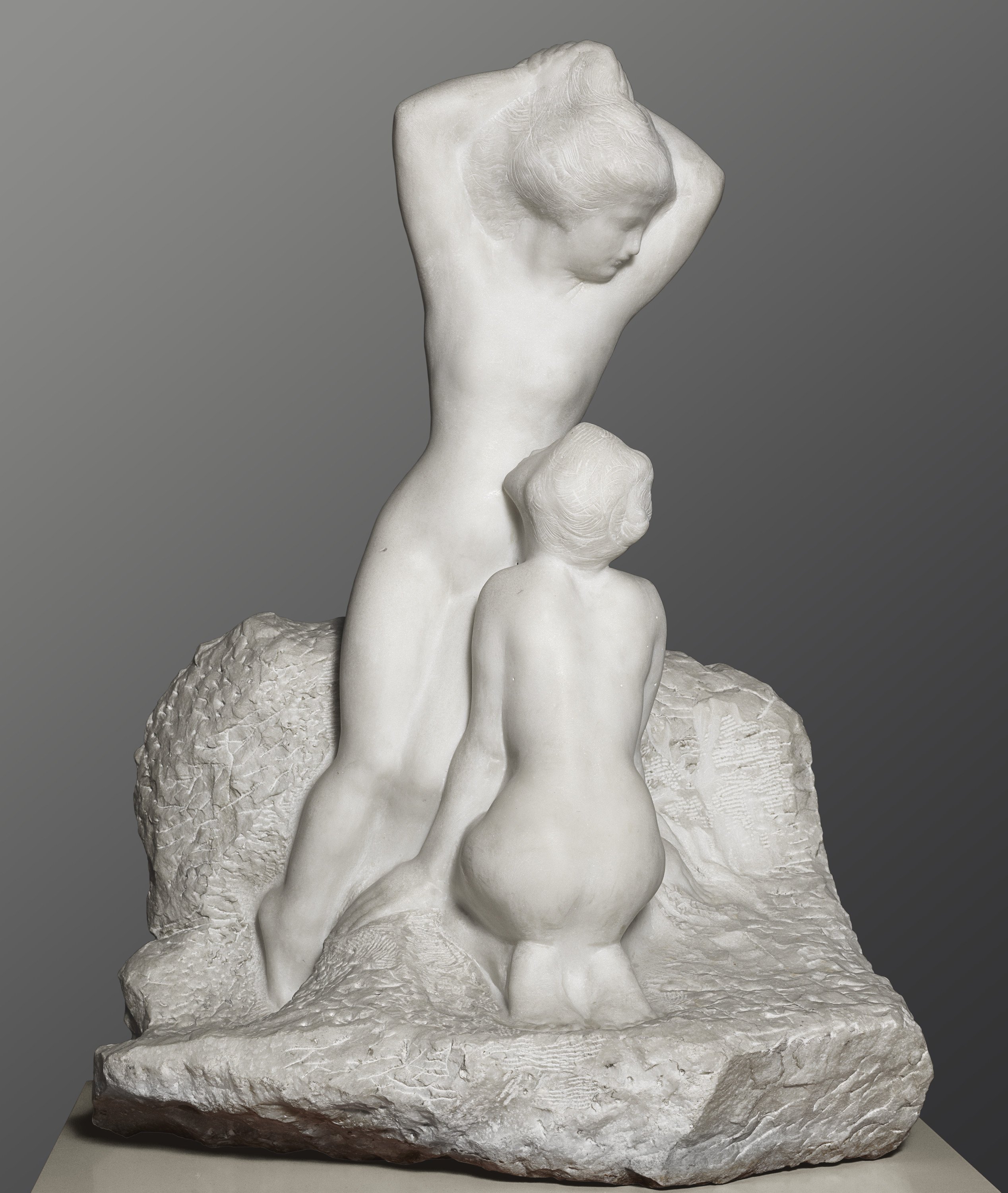The Birth of Venus (The Aurore)
The Birth of Venus (Aurora) is a combination in marble of three motifs from plaster casts created by Rodin in 1880. The crouching figure is taken from The Sphinx, while Venus is derived from two earlier casts, Headless, reclining female Nude and Kneeling Man. In the case of the first two, Rodin replaced the horizontal format with the vertical one that we see here. In addition, he changed the features of the Kneeling Man into that of Venus, the paradigm of female beauty.
In The Birth of Venus (Aurora) Rodin emphasised the Michelangelesque concept of sculpture as something that emerges from the stone, not only through the contrast between the finish or finite of the figures and the non finite of the base, but also through the inherent movement within the group and the juxtaposition of horizontals and verticals.
JAL
The change of sex did not prevent Rodin from using it in this manner, although the male appearance of Venus is perhaps surprising. As with the Christ and the Magdalen, the execution of the marble was underway before it was commissioned by Thyssen. In January 1909 it was completed and it was probably at this moment that Bulloz took the remarkable photograph that shows a series of small "abatis" (feet and legs) positioned in front of the group that is seen from the back and that is separated by a cloth behind which a male head appears-possibly that of a studio assistant (Musée Rodin, Ph. 2509). The marble was thus in Rodin's studio, together with the second version of Christ and Magdalen, and was noticed as such by Jean Morgan, who described it in Le Gaulois of 21 January 1909, emphasising the importance that Rodin gave to the light: "The study of these two women, one of whom is on her knees and still trapped by the raw material, while the second one lifts her arms above her head in an movement of infinite grace, is used wonderfully by the master in his demonstration [...].
"[...] The sculpture, you see, is not made to be hung on a wall like a bas-relief; one must be able to turn around it and observe all of its angles; a sculpture must be flooded with light and participate in the life that surrounds it. I know that this is a dangerous test: only the works that resist are truly beautiful. Take a Tanagra, it will remain great wherever you install it." The Birth of Venus is the only one of the marbles in the Thyssen Collection of which the Musée Rodin does not possess the mould.
Antoinette le Normand-Romain

